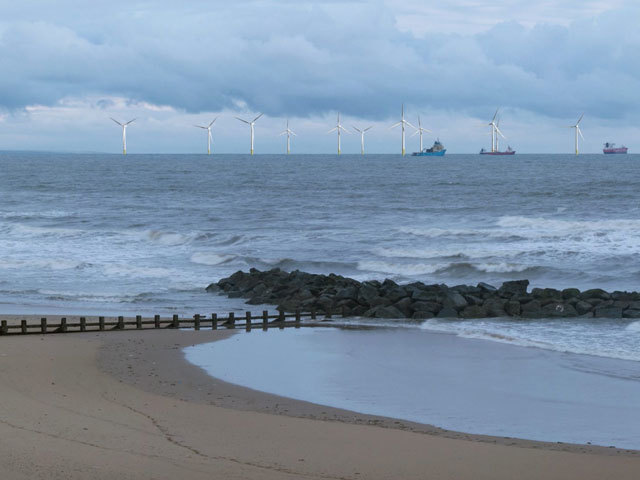
Campaigners were celebrating last night after plans for an electrical substation linked to a controversial offshore windfarm were rejected.
Developers had described the plant, which would have been built on a former landfill site at Blackdog , as “vital” for the 11-turbine project in Aberdeen Bay.
But councillors blocked the proposals amid fears about the health of residents.
Their decision represents a huge setback for the £230million European Offshore Wind Deployment Centre (EOWDC), a partnership between Vattenfall, Aberdeen Renewable Energy Group and Technip.
The developers will now have to decide whether to appeal against the councillors’ ruling or submit plans for an alternative site.
Last night, the decision which was made after a series of surveys uncovered traces of asbestos and other contaminants on the land, was described as a “victory for commonsense” by villagers.
Trump International, which has objected to the turbine scheme because the structures would be within sight of its golf resort at Menie, claimed the windfarm project was as “good as dead”.
US-based billionaire Donald Trump took to Twitter to congratulate the campaigners, saying they had “defeated the substation, stopping inefficient and ugly wind turbines”.
Edna Booth, the pensioner who spearheaded the Blackdog residents’ campaign, said the group was ready to do battle again if the developers appealed.
EOWDC spokesman Iain Todd did not rule out the possibility of challenging the council’s decision last night and said the team would consider all their options.
He said: “We are extremely disappointed. We shall look very carefully at the formal planning reasons given for the decision and take it from there.”
Members of Aberdeenshire Council’s Formartine area committee debated the substation proposals for more than an hour yesterday, hearing representations from both Vattenfall and John Campbell QC, representing the Trump Organisation, and Blackdog residents.
Mr Todd urged councillors to back the plans, which he said would not only boost the north-east’s economy but put it at the centre of Scotland’s future plans for renewables.
He also stressed it was not “unusual” to find asbestos on brown-field sites such as a former landfill, and that strict protocols set by the Health and Safety Executive would be followed if any further traces were discovered.
However, Mr Campbell questioned the risks of approving the substation, adding: “You are being asked to grant planning permission for the excavation of a former landfill site that contains asbestos in a village of 82 houses.”
Applause and tears greet rejection
There were tears of joy and applause when councillors rejected plans for the substation yesterday.
Nearly the whole of Blackdog banded together to oppose the plans, citing concerns about heavy traffic, loss of amenities, noise disturbance and access to the beach.
But their main concern was for their health, as they repeatedly claimed there was asbestos in the former landfill site, which was confirmed after councillors deferred the application in April to allow further surveys to be carried out. After the decision, pensioner Edna Booth said the group were “chuffed to bits” that their lobbying had been successful.
She said: “It’s a victory for commonsense, but we were worried as we sat listening to the councillors go through all the for and against arguments.
“We’ve won the first fight, but we’ll have another one on our hands if Vattenfall appeals to the Scottish Government to overturn the decision.”
Fellow opponent Nicola Black added: “I was really encouraged about what they said about the asbestos. As they said, the levels are unknown, why disturb the unknown? It’s better left alone.
“For a village that’s been so ignored, we’ve got nothing, we’ve done well. I’m so happy.”
US billionaire Donald Trump had also opposed the substation, as part of his campaign against the 11-turbine windfarm.
He argued that it would destroy the views from his nearby golf resort at Menie.